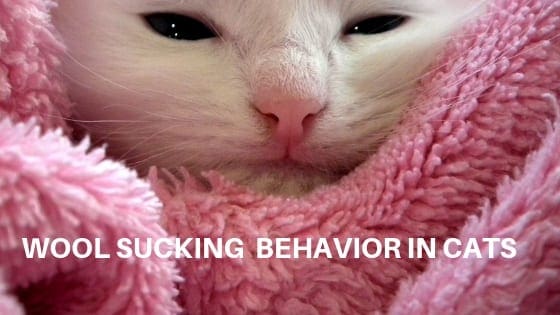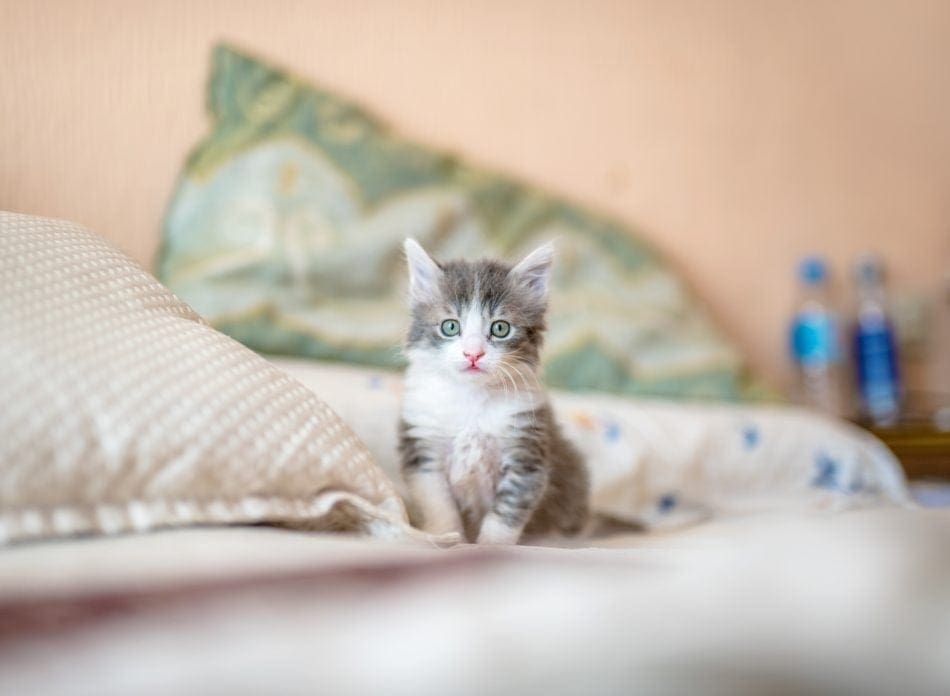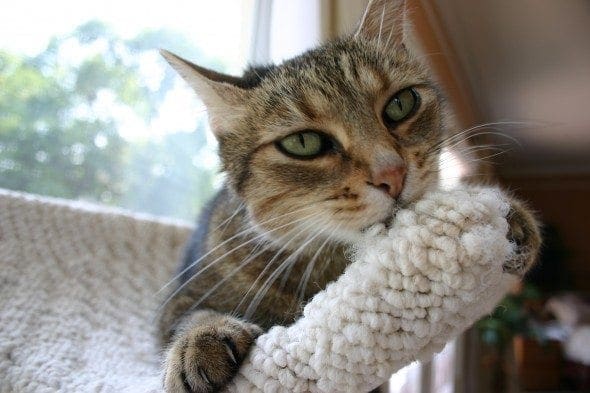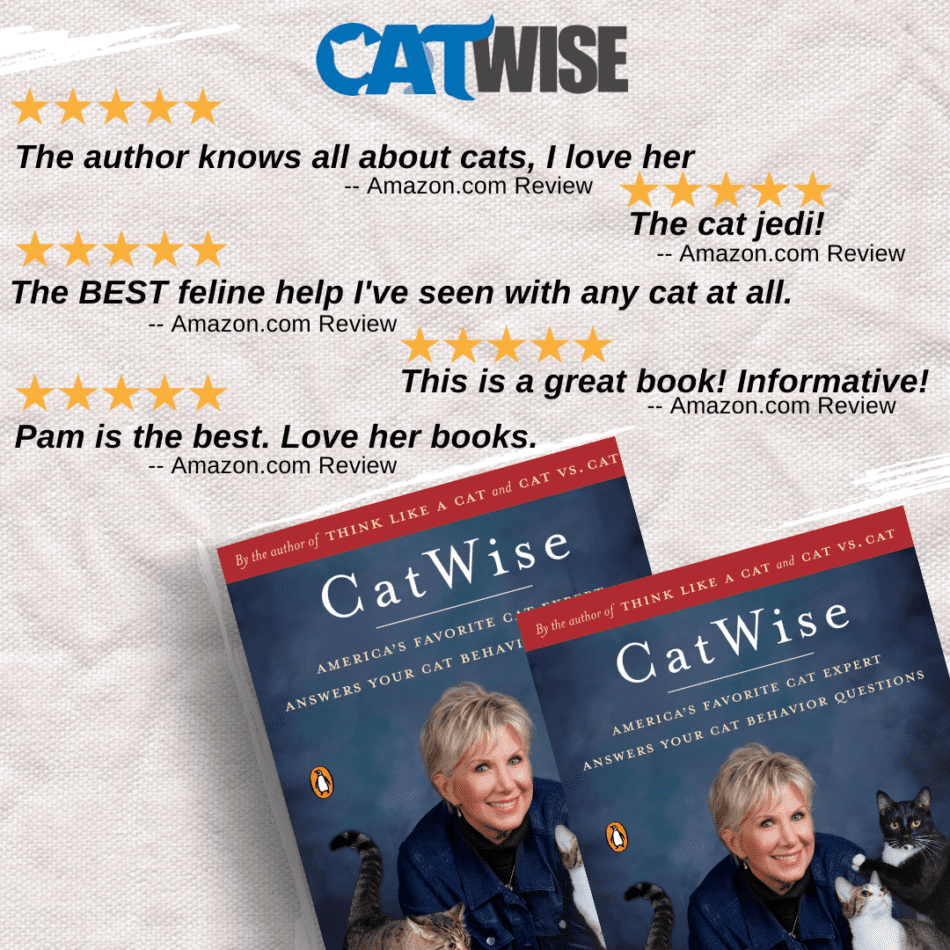
If you’ve never heard of this, I know it probably sounds like a very weird and unappealing thing for a cat to do, but it’s actually relatively common.
What is Wool Sucking?
The behavior consists of a cat actually sucking on items such as blankets, sweaters, shoelaces, and even bathmats and carpets. The most common materials though are blankets and sweaters. There are also cases where a cat may suckle on another cat’s tail or other body part.
Some cats actually even begin chewing on and ingesting the material and that’s when wool sucking transitions into pica behavior. Pica is the term used for the behavior of eating or sucking non-food material. Pica can lead to intestinal problems.
Wool sucking is usually seen in cats under one year of age. Typically, many cats eventually outgrow the behavior but some do continue to engage in wool sucking if there is no behavior modification or environmental change made.
Here are some contributing factors to wool sucking:
Abrupt or Too-Early Weaning
The behavior seems to be a carry-over from nursing. There are several theories as to why a cat may continue it as they mature. One contributing factor may be abrupt or too-early weaning of a kitten rom the mother. Ideally, kittens should be allowed to stay with the mother cat until they’re 12 weeks old. Many times though, kittens are removed from the mother at the frighteningly early age of 6 weeks just because they are capable of eating solid food. Unfortunately, they aren’t really physically or emotionally ready to be separated from the mother or littermates. Weaning should also be done gradually even when the kittens are able to eat solid food. There are also social lessons kittens learn during those first 12 weeks that are important as they mature so there are numerous reasons not to separate kittens from the mother and littermates too early. Unfortunately though, it does happen, whether at the hands of uninformed humans or due to a tragedy where kittens are orphaned.
If you adopt or rescue a kitten who is under 8 weeks of age, he may exhibit some wool sucking behavior, especially when in a comfortable, warm position (such as on your lap or in your arms). Just because the kitten is capable of eating solid food doesn’t mean he feels ready to let go of that comforting feeling of suckling on the mother (or in this case, your sweater). The soft, warm feeling of a blanket or sweater becomes a close second choice since nursing on the mother is no longer available.

Photo: Kote Puerto for Unsplash
Separation Anxiety or Stress
A cat under stress or exposed to sudden changes such as the arrival of a new baby to the family, the sudden absence of a family member (divorce, college, work schedule change, etc.), move to a new home, too-dense cat population, unclean living conditions, and so on, can result in wool sucking behavior. Cats can suffer from separation anxiety and that can lead to wool sucking behavior. In a human child you might see thumb sucking behavior during stressful times. In a human adult you might see nail biting or hair twirling. Wool sucking becomes the feline equivalent.
Breed Related
Wool sucking has been found to be more common in Oriental breeds.
Other Factors
Other factors may contribute to wool sucking behavior such as lack of environmental stimulation, nutritional deficiencies, lack of dietary fiber, and underlying medical conditions.
Techniques for Discouraging Wool Sucking Behavior
The first and easiest step in the process is to remove or at least reduce access to the tempting material. If the substrate isn’t available, the cat can’t suckle on it.
Have your cat examined by the veterinarian to rule out any potential underlying medical cause for the behavior. In addition, talk to your veterinarian about your cat’s diet in case he feels there is a dietary deficiency.
Divert your cat’s attention by offering other activities – especially ones that encourage confidence. Playtime is the perfect choice. When you notice your cat is getting in the position that usually precedes wool sucking, distract him by engaging in an interactive play session.

Photo: Pam Johnson-Bennett
You can also use solo playtime by providing lots of opportunities to enjoy puzzle feeders and solo activity toys.
Increase environmental enrichment by providing places to climb, scratch, play and nap. A cat tree that overlooks an outdoor bird feeder or at least in a spot that overlooks something the cat finds interesting would be ideal. Provide sisal scratching posts so your cat has appealing places to displace anxiety or emotion by scratching on a rough surface. As mentioned previously, provide puzzle feeders and other solo games. If your cat reacts to television, turn on YouTube and find a video that showcases prey and other cat-appealing critters.
Reduce anxiety and stress. Make sure the cat’s litter box set-up is clean, appealing and in a location where the kitty can feel safe and secure. If you have more than one cat, provide more than one litter box. The same goes for the feeding station. Don’t ask cats to eat out of the same food bowl.
If separation anxiety is the issue, that must be addressed through appropriate behavior modification.
Need More Information?
For more information on wool sucking behavior, cat behavior problems and cat training, refer to Pam’s best-selling books. Pam’s books are available at bookstores and also online. We’ve included links to Amazon here on our website.
If you have a question about your cat’s behavior or health, contact your veterinarian. This article is not intended as a medical diagnosis nor is it a replacement for your cat’s regular veterinary care.
This article is for general information purposes only.
 Problem Solving & Advice by Pam Johnson-Bennett Cat Behavior Expert & Best-selling Author
Problem Solving & Advice by Pam Johnson-Bennett Cat Behavior Expert & Best-selling Author




